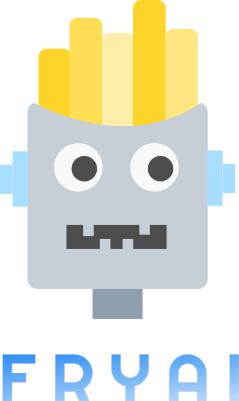- FryAI
- Posts
- AI-powered marketing: good or bad?
AI-powered marketing: good or bad?

Good morning, and happy Wednesday! Take a sip of your coffee, and let’s explore today’s AI happenings together. ☕️
🤯 MYSTERY AI LINK 🤯
(The mystery link can lead to ANYTHING AI-related: tools, memes, articles, videos, and more…)
Today’s Menu
Appetizer: Meta and TikTok embrace AI-powered ads 📲
Entrée: “Godfather of AI” surprisingly wins Nobel Prize for physics 🏆
Dessert: AI reveals sex-based differences in brain cancer risks 🧠
🔨 AI TOOLS OF THE DAY
🎤 Musicfy: Create your own AI voice for songs. → Check it out
📝 Y-Pod (App): Your interactive life goals planner. → Check it out
📚 Ello: An AI reading coach for children. → Check it out
META AND TIKTOK EMBRACE AI-POWERED ADS 📲
Q: Why is Yoda so good at marketing?
A: He uses the sales force. 🤪
What’s going on? Meta and TikTok are both rolling out new AI-powered tools for advertisers.
What is Meta doing? Meta is rolling out new AI-powered video editing tools for advertisers. One feature lets advertisers upload a still image and use Meta AI to animate parts of it, like making objects float around the frame. Another tool allows for video expansion, using AI to generate extra pixels to increase video size, similar to how some image editing tools expand backgrounds. These AI advancements build upon Meta’s current offerings, which already enable text and image generation for ads.
What is TikTok doing? TikTok introduced its AI-powered Smart+ platform, designed to streamline the ad creation and deployment process for advertisers. This performance marketing solution automates the entire ad journey, from creative development to targeting the ideal audience. By allowing advertisers to input assets, budgets, and goals, Smart+ leverages the TikTok Symphony Suite to generate and deliver tailored ads to the right users.
Why should you care? For advertisers, the guessing game is over. AI has the growing ability to learn from consumer data and customize ads in engaging ways. For consumers, the use of AI in advertising can be looked at in one of two ways. On the one hand, it means your feed will be filled with more interesting ads relevant to your interests, exposing you to useful products and services you would otherwise not know about. On the other hand, it means ads are about to get much more tempting, luring you to spend money you otherwise wouldn’t.
“GODFATHER OF AI” SURPRISINGLY WINS NOBEL PRIZE FOR PHYSICS 🏆
Did you hear about the scarecrow who won the Nobel prize? He was outstanding in his field. 🐦⬛
What happened? The Nobel Prize in Physics has been awarded to Geoffrey Hinton, known as the “Godfather of AI,” and John Hopfield for their groundbreaking work on machine learning.
Want the details? Hinton, a professor at the University of Toronto, is known for his work developing advanced machine learning models. However, the irony is that he resigned from Google in 2023 and has since voiced concerns about machines potentially surpassing human intelligence. He is famous for stating that AI overtaking humanity has the same probability as “a coin flip.” The other recipient of the prize, John Hopfield, is a professor at Princeton who developed a neural network that can recall patterns similarly to the human brain. Their research laid the foundation for AI systems that drive technology today, from search engines to photo editing.
“It’s going to be like the Industrial Revolution—but instead of our physical capabilities, it’s going to exceed our intellectual capabilities.”
AI REVEALS SEX-BASED DIFFERENCES IN BRAIN CANCER RISKS 🧠
Cancer is no laughing matter. AI continues to make small, yet significant breakthroughs in medical science. 🙏
What’s new? Researchers at the University of Wisconsin-Madison have developed an AI model to identify sex-specific risk factors in glioblastoma, an aggressive form of brain cancer.
How does this work? By analyzing digital pathology slides, the AI model was able to detect subtle tumor patterns that correlate with patient survival times, revealing differences between male and female patients. In women, the AI model found that tumors that infiltrate healthy tissue are linked to higher risk, while in men, certain cells around dying tissue are associated with faster progression. These findings offer a pathway to personalized glioblastoma treatments, potentially improving outcomes and quality of life for patients.
“By uncovering these unique patterns, we hope to inspire new avenues for personalized treatment and encourage continued inquiry into the underlying biological differences seen in these tumors.”
“WATCH THIS” WEDNESDAY 👀
Deepfakes are all the rage these days. This video breaks down 5 deepfake tools you need to try:
HAS AI REACHED SINGULARITY? CHECK OUT THE FRY METER BELOW:
What do ya think of this latest newsletter? |



